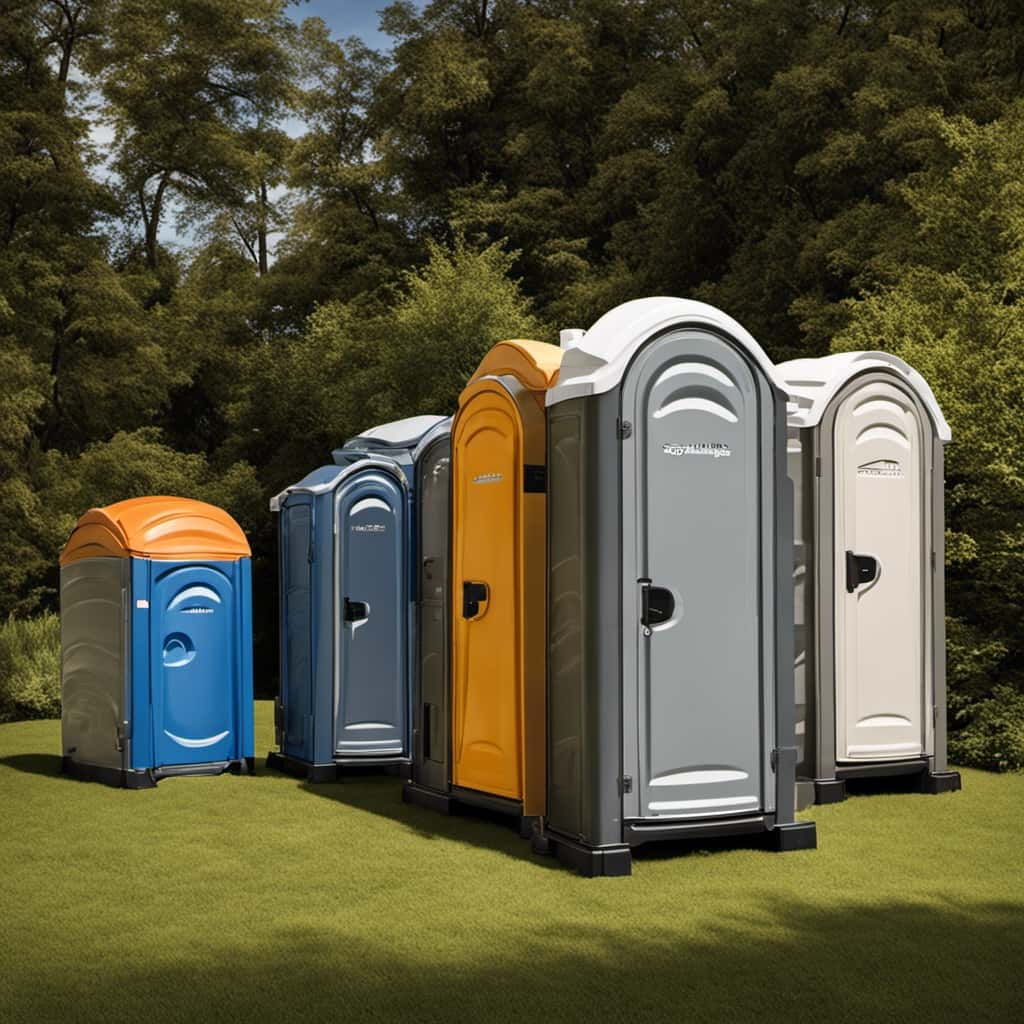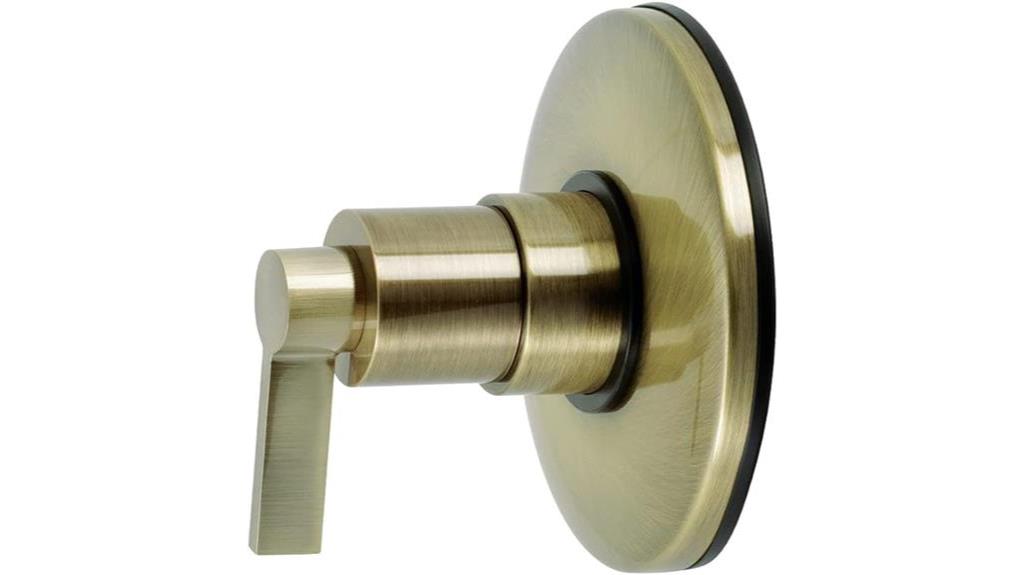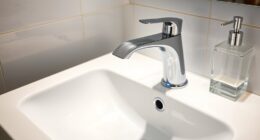We’ve all heard the saying ‘necessity is the mother of invention.’ Well, when it comes to personal hygiene, Americans have certainly found creative solutions throughout history.
In this article, we’ll explore what our ancestors used before the invention of toilet paper. From leaves and plant materials to water and hand washing, corn cobs and husks, newspaper and catalog pages, and even personal cloth or sponge, we’ll delve into the fascinating world of alternative bathroom practices.
So, buckle up and prepare for a journey through time and toilet habits.
Key Takeaways
- Leaves like mulberry and fig, moss, grass, and corn cobs were commonly used as natural substitutes for toilet paper.
- Water-based hygiene practices, such as using bidet systems and hand washing, were recognized as essential for cleanliness and disease prevention.
- Americans used corn cobs and husks as alternatives to toilet paper, particularly in rural areas with limited access to commercial products.
- Newspaper and catalog pages were often repurposed for bathroom use due to their large size and absorbent texture.
Leaves and Plant Materials
We frequently used leaves and plant materials as alternatives to toilet paper. Before the invention and widespread use of modern toilet paper, people throughout history had to find other means to maintain cleanliness after using the restroom. In many ancient civilizations, leaves were commonly used as a natural substitute for toilet paper. The softness and accessibility of certain leaves, such as the large leaves of the mulberry or fig trees, made them popular choices.

Additionally, certain plant materials like moss, grass, and corn cobs were also utilized for this purpose. These toilet paper alternatives were readily available and cost-effective, making them viable options for individuals in various historical periods. While they may not have provided the same level of comfort and convenience as modern toilet paper, they served their purpose and were utilized by many cultures throughout history.
Water and Hand Washing
To continue our exploration of hygiene practices before the invention of toilet paper, let’s now delve into the use of water and hand washing. Water has long been used as a means of cleaning oneself after using the restroom. In many cultures, bidet systems were commonly used, providing a stream of water to cleanse the area. This practice is still prevalent today in many parts of the world. Hand washing, too, played a crucial role in maintaining hygiene. It was recognized that washing hands after using the restroom was essential to prevent the spread of diseases. In fact, historical records show that hand washing was promoted as early as the 17th century. The table below summarizes the cultural practices related to water and hand washing before the advent of toilet paper.
| Cultural Practices | Water Usage | Hand Washing |
|---|---|---|
| Ancient Greece | Common | Common |
| Ancient Rome | Common | Common |
| Islamic World | Common | Emphasized |
| East Asia | Common | Emphasized |
| Middle Ages Europe | Limited | Limited |
This evidence-based analysis demonstrates the importance of water and hand washing in maintaining hygiene before the widespread use of toilet paper.
Corn Cobs and Husks
Before the invention of toilet paper, Americans utilized corn cobs and husks for their bathroom needs. The historical significance of corn as a toilet paper alternative is evident in the resourcefulness of early Americans. Corn was a staple crop in the Americas, and its cobs and husks were readily available. They provided a practical solution for personal hygiene, especially in rural areas where access to commercial products was limited.

However, the environmental impact of using corn cobs and husks as toilet paper substitutes is worth considering. Corn production requires significant water, fertilizer, and pesticides, which can contribute to water pollution and soil degradation. Additionally, the disposal of corn cobs and husks may not be as environmentally friendly as modern toilet paper.
While corn cobs and husks served their purpose in the past, advancements in toilet paper production have led to more sustainable and efficient alternatives.
Newspaper and Catalog Pages
During our research on what Americans used before toilet paper, we discovered that newspaper and catalog pages were often repurposed for bathroom use. This practice was a result of alternative options and historical practices.
In the early days, newspapers were readily available and often used in outhouses or privies. Their large size and absorbent texture made them suitable for this purpose. Similarly, catalog pages were also used as a substitute for toilet paper. People would tear out pages from old catalogs and use them as a hygienic solution.

While these methods may seem unconventional to us today, they were common practices in the past. Moving forward, let’s explore another interesting alternative option: personal cloth or sponge.
Personal Cloth or Sponge
We often used a personal cloth or sponge as our preferred alternative to toilet paper. These hygienic alternatives were commonly used in various cultural practices throughout history.
In ancient Rome, for example, individuals would use a sponge attached to a stick, known as a tersorium, which was soaked in water or vinegar. This practice ensured cleanliness after using the toilet.
Similarly, in ancient Greece, people would use small pieces of cloth called pessoi, which were washed and reused. Even today, some cultures continue to use personal cloths or sponges instead of toilet paper. This practice not only reduces waste but also promotes sustainability.

While it may seem unconventional to some, the use of personal cloths or sponges as an alternative to toilet paper has proven to be an effective and culturally significant method of maintaining hygiene.
Frequently Asked Questions
How Did the Use of Leaves and Plant Materials for Personal Hygiene Evolve Over Time?
Over time, personal hygiene practices have evolved, with cultural influences playing a significant role. The use of leaves and plant materials was likely an early method. Further research would provide more evidence on this topic.
Are There Any Specific Types of Plants or Leaves That Were Commonly Used for Cleaning Purposes?
We’ve explored the evolution of hygiene practices and the cultural significance of plant materials. When it comes to specific types of plants or leaves commonly used for cleaning purposes, our research has provided valuable insights.
What Were the Cultural and Geographical Factors That Influenced the Use of Water and Hand Washing as a Cleansing Method?
Cultural and geographical influences played a significant role in shaping the use of water and hand washing as a cleansing method. These factors shaped our hygiene practices and emphasized the importance of cleanliness in our daily lives.

How Were Corn Cobs and Husks Prepared Before Being Used as an Alternative to Toilet Paper?
Before toilet paper, Americans prepared corn cobs and husks by stripping away excess material and ensuring they were clean. These preparation techniques were part of their hygiene practices, serving as an alternative for toilet paper.
Were There Any Health Concerns or Risks Associated With Using Newspaper and Catalog Pages for Personal Hygiene?
Health risks associated with using newspaper and catalog pages for personal hygiene were minimal due to the ink and chemicals used. Americans used alternatives like corn cobs and husks, which were prepared by removing sharp edges.
Conclusion
In conclusion, history reveals that Americans have used a variety of unconventional materials before the advent of toilet paper. From leaves and plant materials to corn cobs and newspaper pages, our ancestors found resourceful ways to fulfill their hygiene needs.
However, advancements in sanitation practices have led us to the convenience of toilet paper today. Let’s appreciate the comfort and cleanliness it provides, like a soft embrace that guides us through our bathroom rituals.











